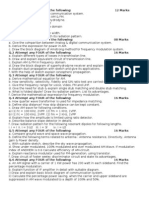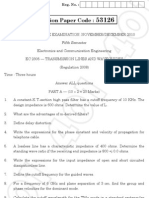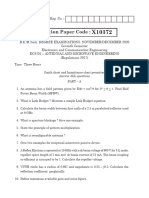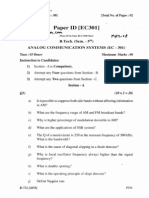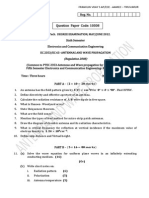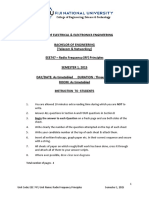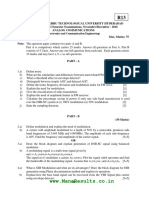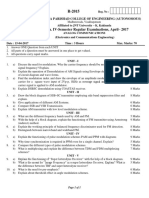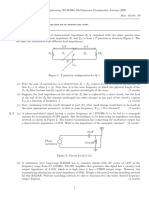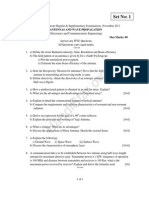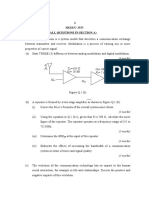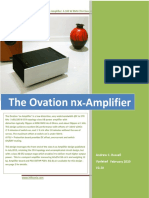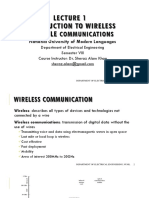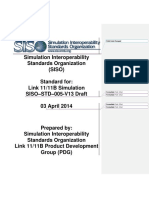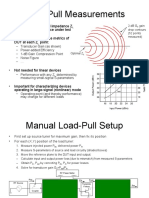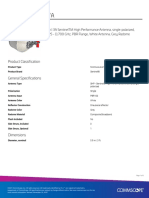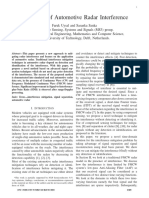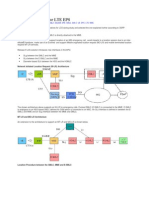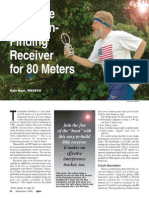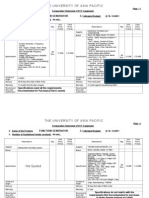Scheme E
Sample Question Paper
Course Name : Electronics Engineering Group Course Code : ET/EN/EJ/EX/ED/EI Semester : Fourth
12118
Time: 3 Hours
Subject Title : Analog communication System Marks Instructions: 1. All questions are compulsory. 2. Illustrate your answers with neat sketches wherever necessary. 3. Figures to the right indicate full marks. 4. Assume suitable data if necessary. 5. Preferably, write the answers in sequential order. Q.1A) Attempt any SIX of the following: a. Draw the block diagram of communication system. b. Define modulation index in AM & FM. c. Give the principle of superhydrodyne. d. Why modulation is needed? e. Represent AM wave in time domain f. Why Bandwidth is required. g. Define polarization & Beam width. h. Draw Yagi Uda Antenna with its radiation pattern. 12 Marks : 100
Q.1A) Attempt any TW0 of the following: a. Give the comparison between Analog & digital communication system. b. Derive the expression for power in AM.
08 Marks
c. Draw the block diagram of Amstrong method for frequency modulation system.
Q.2 Attempt any FOUR of the following: a. Explain different types of losses in transmission line. b. Draw and explain equivalent circuit of transmission line. c. Explain AM & FM in frequency domain.
16 Marks
d. Draw the block diagram of superhydrodyne receiver and explain each block in brief.
�e. Explain duct propagation with sketch and give its applications. f. With the help of sketch explain Ionospheric propagation.
Q.3 Attempt any FOUR of the following: a. Derive mathematical equation for AM.
16 Marks
b. How sensitivity, selectivity, fidelity and S/N ratio test are carried out on radio receiver. c. Give the frequency range for voice, Video, FM and UHF. d. Give the need for stub & explain single stub matching and double stub matching. e. What is folded dipole? Draw its radiation pattern. List its advantages. f. Derive the mathematical expression for frequency modulation.
Q.4 Attempt any FOUR of the following: a. How quarter wave transformer is used for impedance matching. b. Define skip distance? How skip distance can be kept constant. c. Draw AM wave for following conditions. i. (1) (2) ii. (1) fc = 100 KHz, fm = 1 KHz, fc = 100 KHz, 2VPP. 1VPP. 2VPP. 1VPP
16 Marks
(2) fm = 2 KHz,
d. Explain how the amplitude is limited using ratio detector. e. Describe balance slope detector in details. f. Draw radiation pattern for the following resonant dipoles for following lengths. i. i = l ii. i = 3 l/2 iii. i = 3l iv. i = l/2
Q.5 Attempt any FOUR of the following: a. Compare ground wave and space wave propagation. b. Define the following terms related to antenna : Antenna resistance, Directivity, Antenna gain & Power density. c. With suitable sketch, describe the sky wave propagation.
16 Marks
d. Show under modulated, 100% modulated and over modulated AM-Wave. If modulation index of ANDHERI is 0.6 Calculate efficiency of AM-circuit. e. Explain reactance modulator used for FM-generation, using transistor. f. Draw circuit of foster seeley discriminator circuit and state its advantages.
�Q.6 Attempt any FOUR of the following:
16 Marks
a. An AM signal with a carrier of 1 KW power has 200 watt in each sideband. Find the percentage modulation. b. Explain function of IF amplifier in detail with suitable diagram. c. If R is reflection coefficient what will be its value : (i) If there is no reflected voltage.
(ii) If reflected voltage is same as incident voltage. (iii) If reflected voltage = 10v and incident voltage = 20v. (iv) If reflected voltage = 2v and incident voltage = 4v. d. Describe the ground wave propagation with suitable application. e. Draw the circuit diagram and characteristics of slope detector and describe its working.
